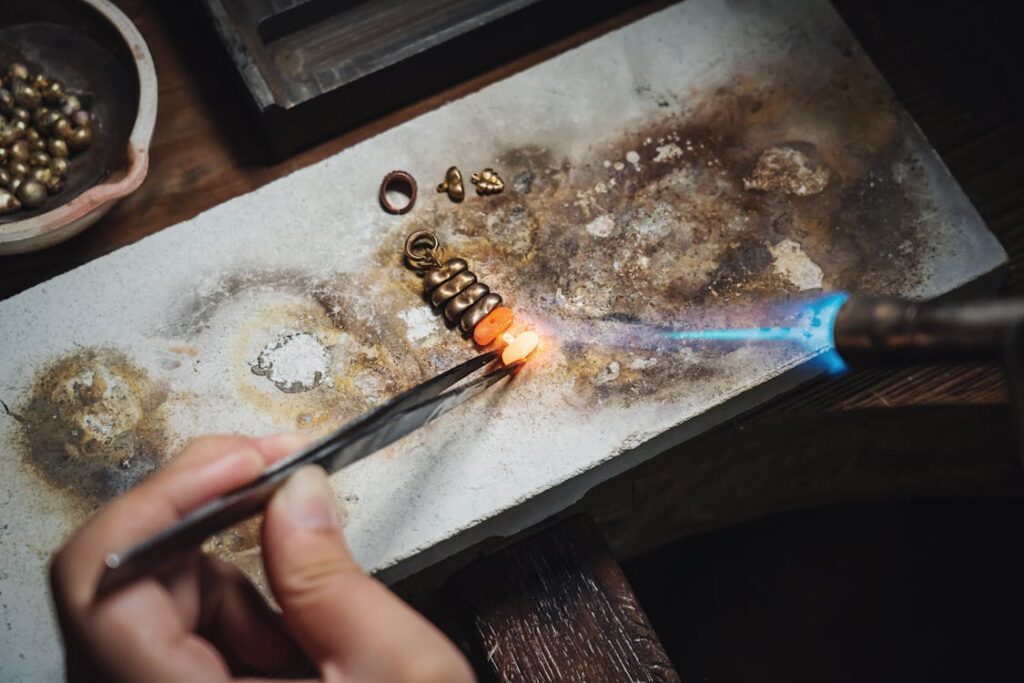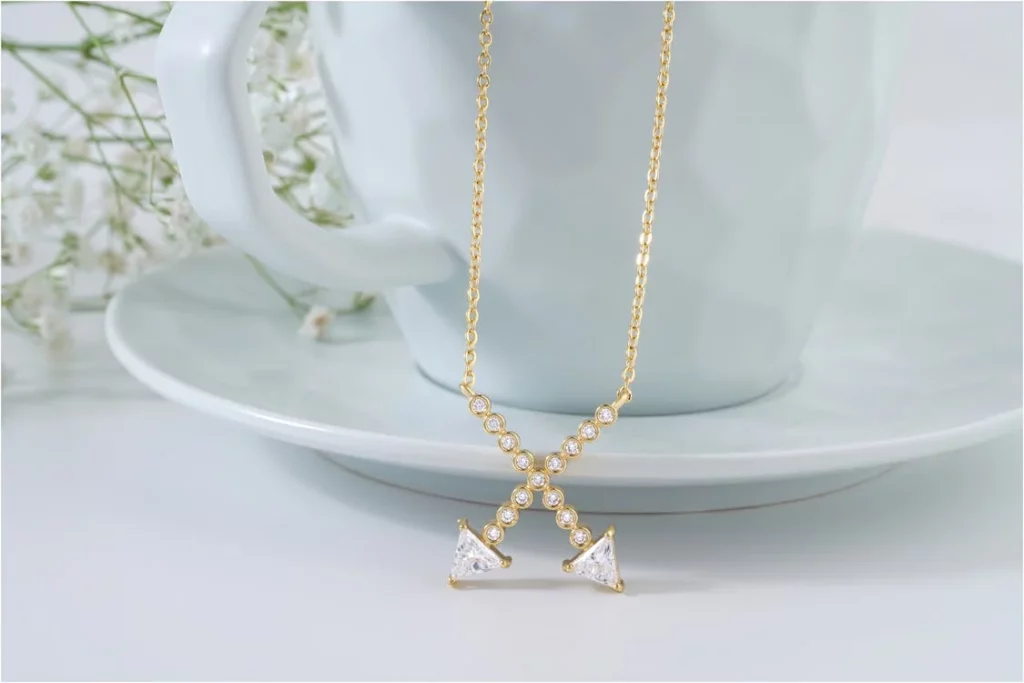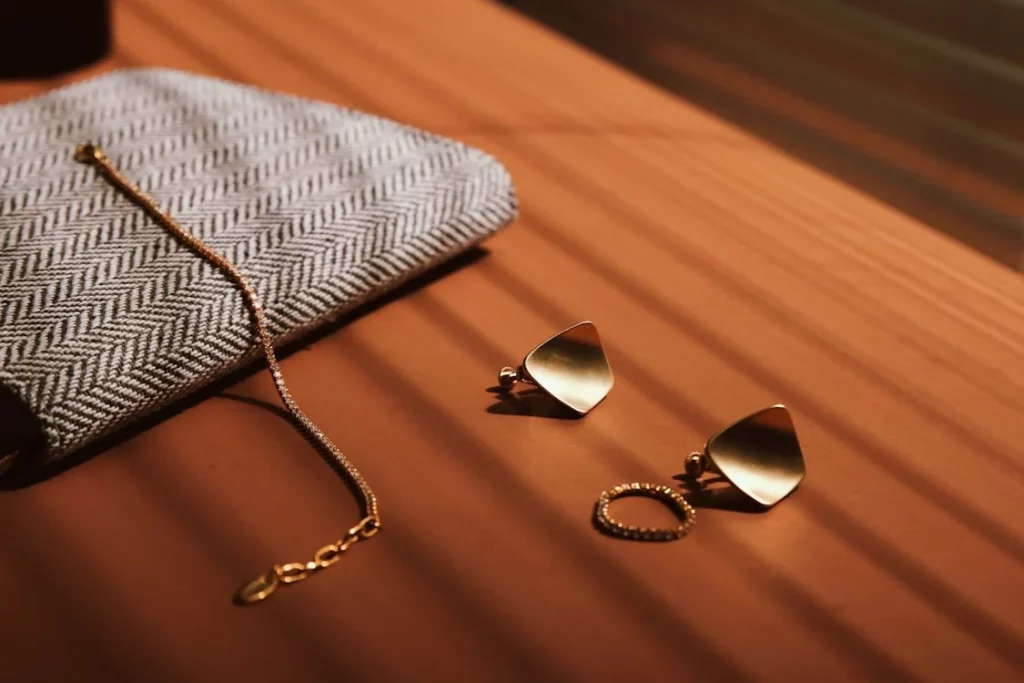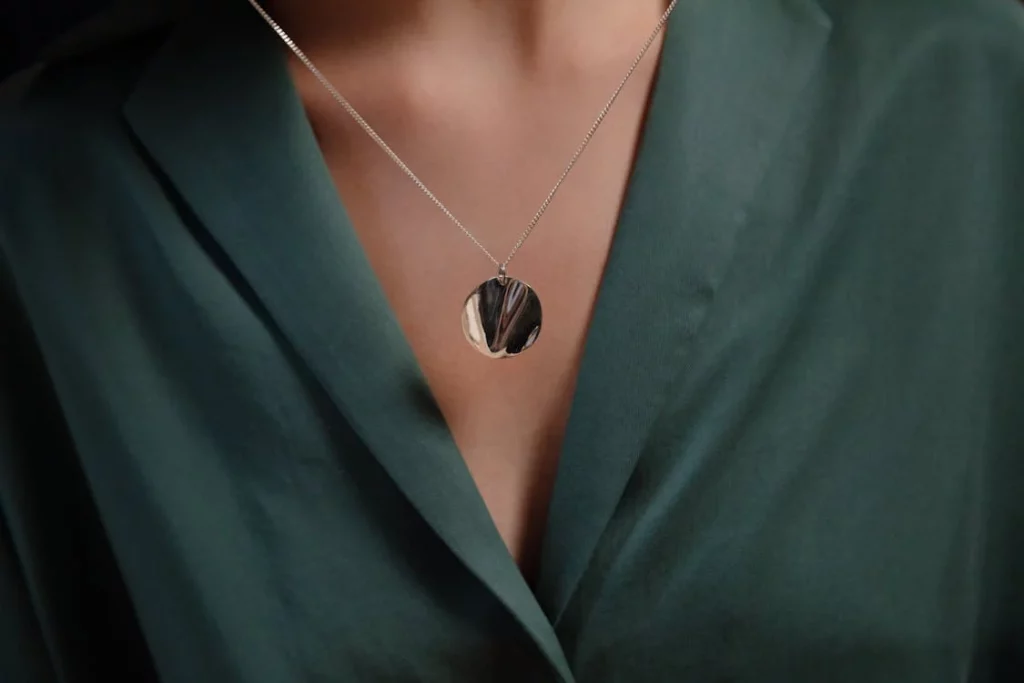Picture this: a necklace that gleams like pure gold, yet possesses the strength of stainless steel. Or a bracelet retains its luster and color even after years of wear. This is made possible through the magic of PVD coating. But what exactly is PVD coating? This article will lead you to the art of PVD coating on jewelry.
What is PVD Jewelry?
PVD, or Physical Vapor Deposition, coating, or plating on jewelry is a sophisticated technique that applies thin metal layers onto the surface of various jewelry pieces, such as titanium and stainless steel. During the PVD process, the jewelry is placed in a vacuum chamber, where the metal to be deposited (such as gold, Roségold, or black titanium) is heated until it reaches a vapor phase. Once in the vapor phase, the metal molecules travel through the vacuum chamber and condense onto the jewelry surface, eine dünne bilden, durable coating.
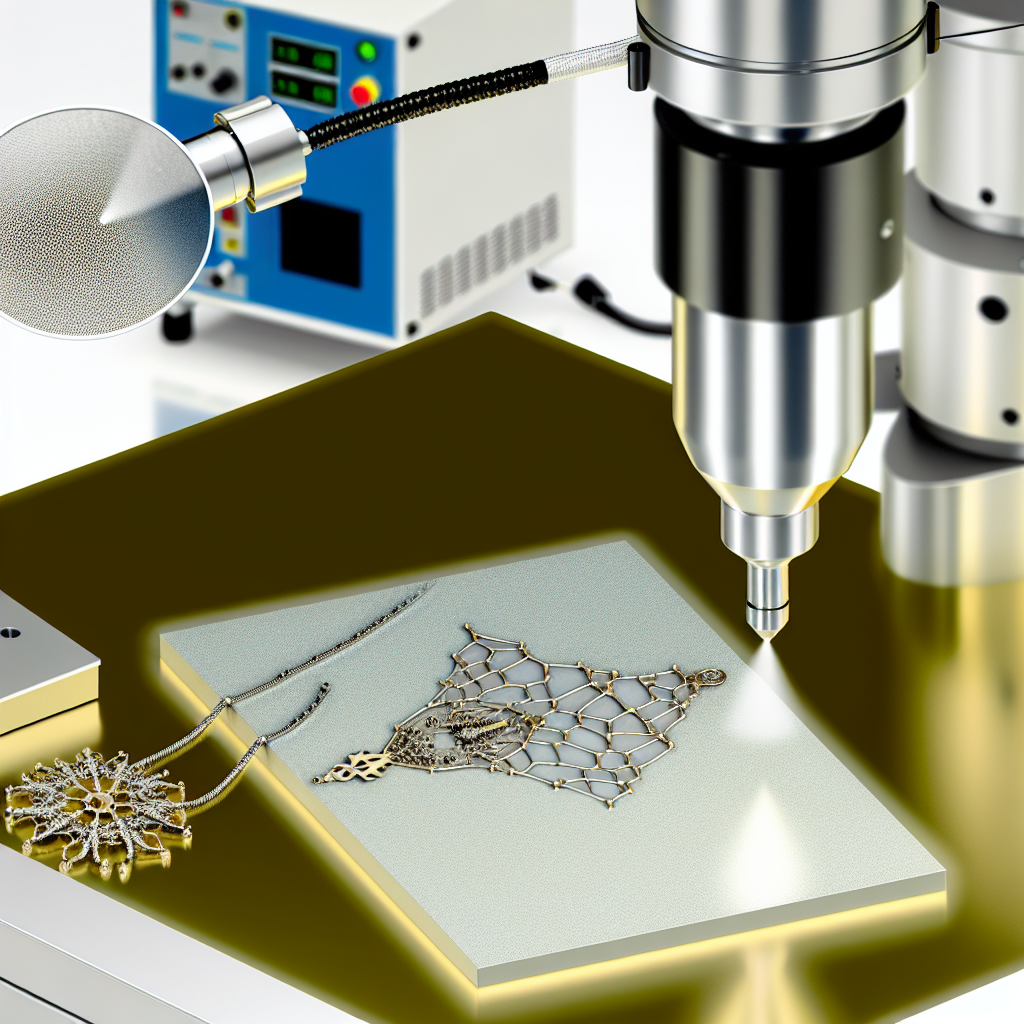
This coating process occurs at high temperatures and under low pressure, allowing the metal particles to bond tightly to the jewelry substrate. As a result, PVD-coated jewelry exhibits excellent scratch resistance, color retention, und Haltbarkeit. The end product is jewelry with a vibrant and long-lasting finish that is both aesthetically pleasing and resilient to everyday wear and tear.
According to industry data, PVD-coated jewelry is up to ten times more durable than traditional plated jewelry. Zusätzlich, studies have found that PVD jewelry retains its color and luster far longer than other coating methods, thanks to its ability to bond molecularly with the metal substrate.
Common Types of PVD Coating on Jewelry
There are several types of PVD coatings commonly used in jewelry making, each offering unique properties and aesthetic options. From the opulent allure of gold to the romantic blush of rose gold, and the bold sophistication of black, each coating can elevate jewelry to extraordinary heights. Let’s learn how these transformative coatings redefine luxury and style in fashion and adornment.
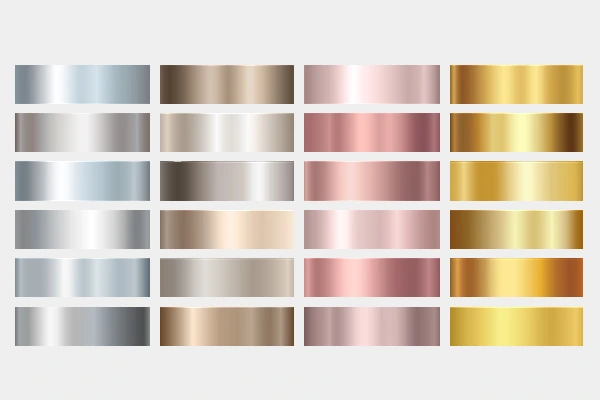
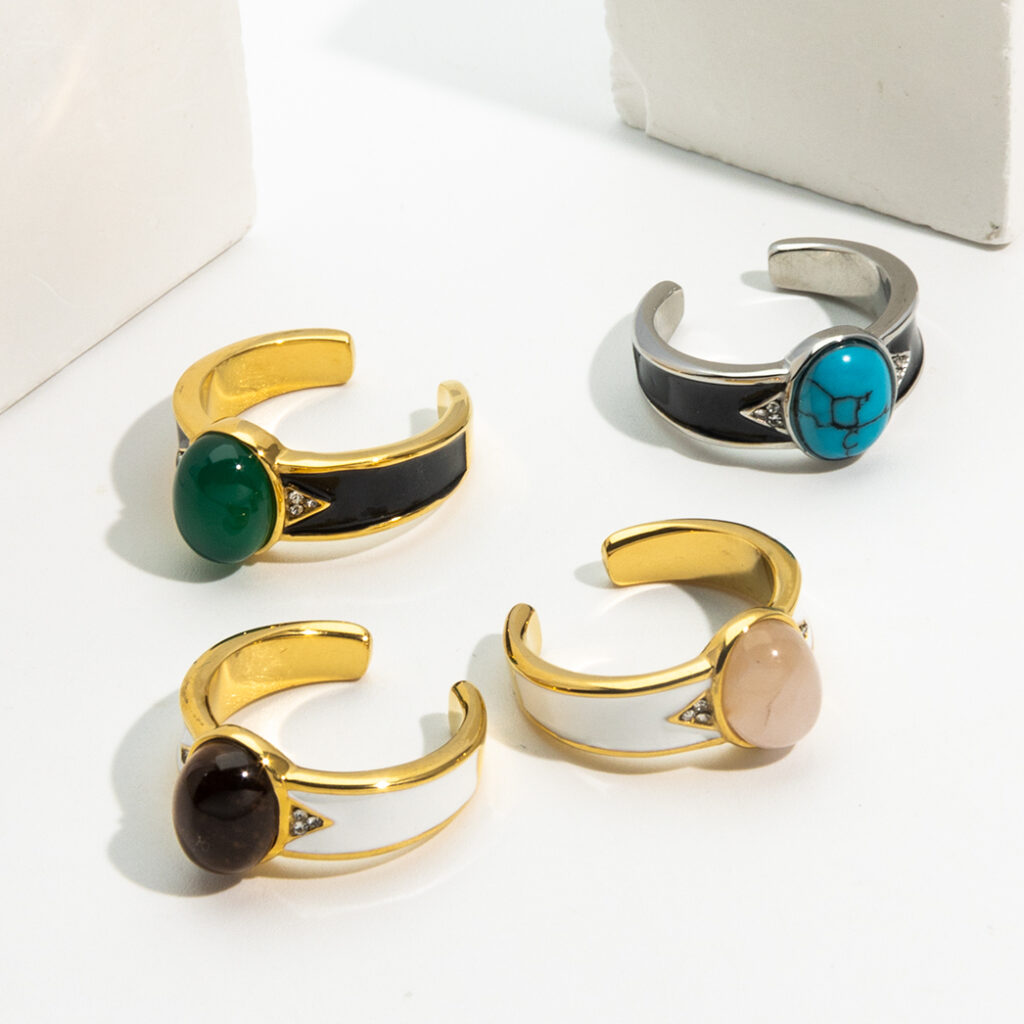
What Is Gold PVD Coating?
Gold PVD coating involves depositing thin layers of gold onto the surface of jewelry through a vacuum chamber process. The gold is vaporized in the chamber and then condensed onto the jewelry, forming a durable and lustrous coating.
Benefits: This coating enhances the brilliance and warmth of gold. Unlike traditional gold plating, it creates a thicker and more resilient layer of gold, providing superior scratch resistance and longevity.
What Is Rose Gold PVD Coating?
Rose Gold PVD coating is similar to Gold PVD coating, but it involves depositing thin layers of rose gold onto the surface of jewelry through the PVD process. The rose gold is vaporized and condensed onto the jewelry substrate, creating a warm and romantic hue.
Benefits: Rose Gold PVD-coated jewelry exudes elegance and individuality.
What Is Black PVD Coating?
Black PVD coating entails depositing thin layers of black titanium or other materials onto the surface of jewelry through the PVD process. The material is vaporized and then condensed onto the jewelry substrate, resulting in a sleek and modern black finish.
Benefits: Black PVD-coated jewelry adds a touch of mystery and sophistication to any ensemble, making it a favorite among fashion-forward individuals looking to make a statement with their accessories.
What Is Silver PVD Coating?
Silver PVD coating involves depositing thin layers of silver onto the surface of jewelry through the PVD process. The silver material is vaporized and condensed onto the jewelry substrate, producing a timeless and classic silver finish.
Benefits: Unlike traditional silver plating, PVD coating forms a protective layer that prolongs the life of the jewelry while maintaining its brilliant shine.
What Is Mixed Metal PVD Coating?
Mixed Metal PVD coating combines multiple metals, such as gold, Roségold, und Silber, to create unique and eye-catching finishes on jewelry. The different metals are vaporized and condensed onto the jewelry substrate simultaneously or in layers, resulting in a stunning blend of colors and textures.
Benefits: Mixed Metal PVD coating offers endless possibilities for customization and allows jewelry designers to create truly one-of-a-kind pieces.
Abschluss
In diesem Artikel, you’ve learned the meaning of PVD coating on jewelry and its working principle. PVD coating on jewelry revolutionizes aesthetics and durability and boasts remarkable scratch resistance, vibrant color retention, and enduring brilliance. With its ability to fuse molecularly with the metal substrate, PVD coating ensures that jewelry remains visually stunning and resilient against the rigors of daily wear, ideal for jewelry collectors.
FAQ
1. Does PVD coating wear off jewelry?
NEIN, PVD coating is highly durable and resistant to wear, providing long-lasting protection to jewelry. Unlike traditional plating methods, PVD coating forms a strong bond with the substrate, ensuring it remains intact and maintains its brilliance even with regular wear.
2. How long will PVD coating jewelry last?
Under typical wear conditions, PVD-coated jewelry can maintain its appearance for 2-5 Jahre, while it can endure for up to 10 years or longer with proper care and occasional cleaning.
3. Is PVD coating real gold?
NEIN, PVD coating is not real gold. It’s a process where a thin layer of metal, such as titanium nitride, is deposited onto the surface of jewelry through a vacuum deposition process. This gives the jewelry a gold-like appearance but does not contain actual gold.
4. Does PVD coating tarnish?
PVD coating is generally resistant to tarnishing compared to other metal coatings. Jedoch, prolonged exposure to harsh chemicals or abrasives may cause the coating to degrade over time.
5. Is PVD plated jewelry safe?
Ja, PVD-plated jewelry is considered safe to wear. The process involves depositing a thin metal layer onto the jewelry’s surface, creating a hypoallergenic coating. It’s commonly used in medical implants and food processing equipment, indicating its safety for use in jewelry.


